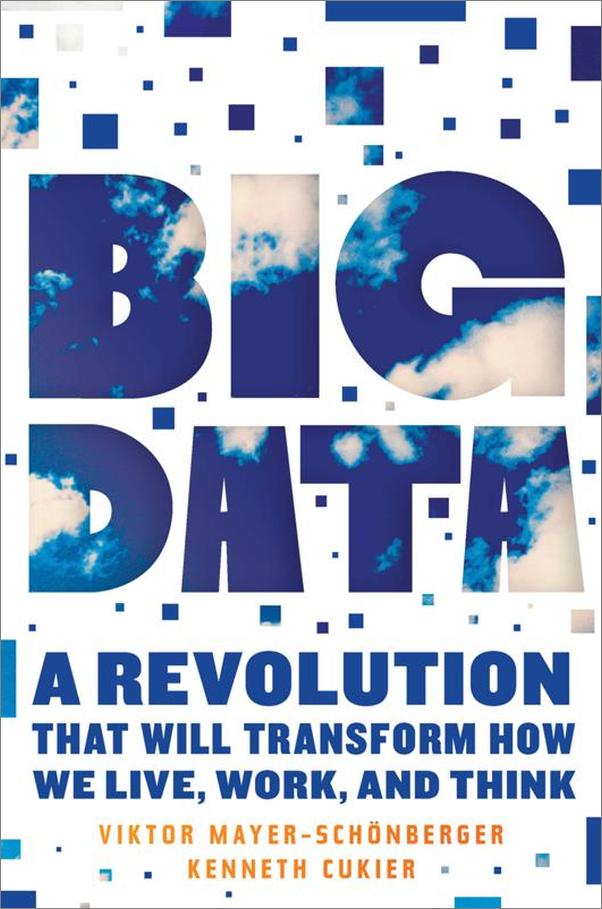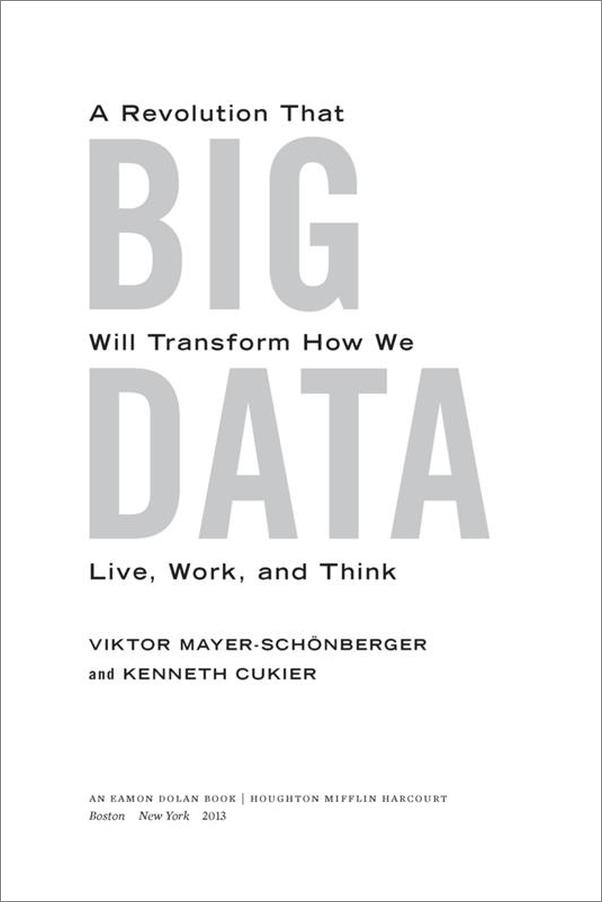BigData_ARevolutionThatWillTransformHowW.epub - (EPUB全文下载)
文件大小:0.39 mb。
文件格式:epub 格式。
书籍内容:
Table of ContentsTitle Page
Table of Contents
Copyright
Dedication
NOW
MORE
MESSY
CORRELATION
DATAFICATION
VALUE
IMPLICATIONS
RISKS
CONTROL
NEXT
Notes
Bibliography
Acknowledgments
Index
About the Authors
Copyright © 2013 by Viktor Mayer-Schönberger and Kenneth Cukier
All rights reserved
For information about permission to reproduce selections from this book, write to Permissions, Houghton Mifflin Harcourt Publishing Company, 215 Park Avenue South, New York, New York 10003.
www.hmhbooks.com
Library of Congress Cataloging-in-Publication Data is available.
ISBN 978-0-544-00269-2
eISBN 978-0-544-00293-7
v1.0313
To B and v
V.M.S.
To my parents
K.N.C.
1
NOW
IN 2009 A NEW FLU virus was discovered. Combining elements of the viruses that cause bird flu and swine flu, this new strain, dubbed H1N1, spread quickly. Within weeks, public health agencies around the world feared a terrible pandemic was under way. Some commentators warned of an outbreak on the scale of the 1918 Spanish flu that had infected half a billion people and killed tens of millions. Worse, no vaccine against the new virus was readily available. The only hope public health authorities had was to slow its spread. But to do that, they needed to know where it already was.
In the United States, the Centers for Disease Control and Prevention (CDC) requested that doctors inform them of new flu cases. Yet the picture of the pandemic that emerged was always a week or two out of date. People might feel sick for days but wait before consulting a doctor. Relaying the information back to the central organizations took time, and the CDC only tabulated the numbers once a week. With a rapidly spreading disease, a two-week lag is an eternity. This delay completely blinded public health agencies at the most crucial moments.
As it happened, a few weeks before the H1N1 virus made headlines, engineers at the Internet giant Google published a remarkable paper in the scientific journal Nature. It created a splash among health officials and computer scientists but was otherwise overlooked. The authors explained how Google could “predict” the spread of the winter flu in the United States, not just nationally, but down to specific regions and even states. The company could achieve this by looking at what people were searching for on the Internet. Since Google receives more than three billion search queries every day and saves them all, it had plenty of data to work with.
Google took the 50 million mos ............
书籍插图:


以上为书籍内容预览,如需阅读全文内容请下载EPUB源文件,祝您阅读愉快。
书云 Open E-Library » BigData_ARevolutionThatWillTransformHowW.epub - (EPUB全文下载)
